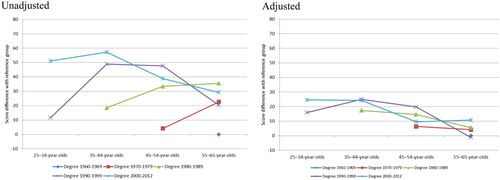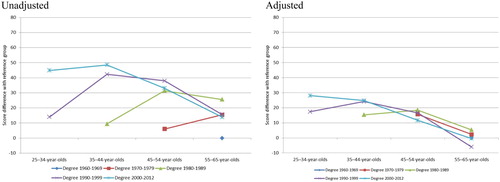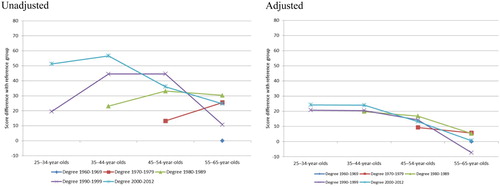Figures & data
Table 1. Background factors used to explain the variation in reading-literacy performance.
Table 2. Weighted numbers of persons in the four nordic countries according to age and decade during which the highest qualification was completed.
Table 3. The final model.
Figure 1a. Denmark: Unadjusted and adjusted associations of the combination of the age and the period during which the highest degree was completed with reading-literacy proficiency.

Figure 1b. Finland: Unadjusted and adjusted associations of the combination of the age and the period during which the highest degree was completed with reading-literacy proficiency.
Note: Adjusted associations are adjusted for education level, field of education, occupation, use of reading skills at work, use of ICT skills at home, gender, and language background.

Figure 1c. Norway: Unadjusted and adjusted associations of the combination of the age and the period during which the highest degree was completed with reading-literacy proficiency.
Note: Adjusted associations are adjusted for education level, field of education, occupation, use of reading skills at work, use of ICT skills at home, gender, and language background.

Figure 1d. Sweden: Unadjusted and adjusted associations of the combination of the age and the period during which the highest degree was completed with reading-literacy proficiency.
Note: Adjusted associations are adjusted for education level, field of education, occupation, use of reading skills at work, use of ICT skills at home, gender, and language background.

